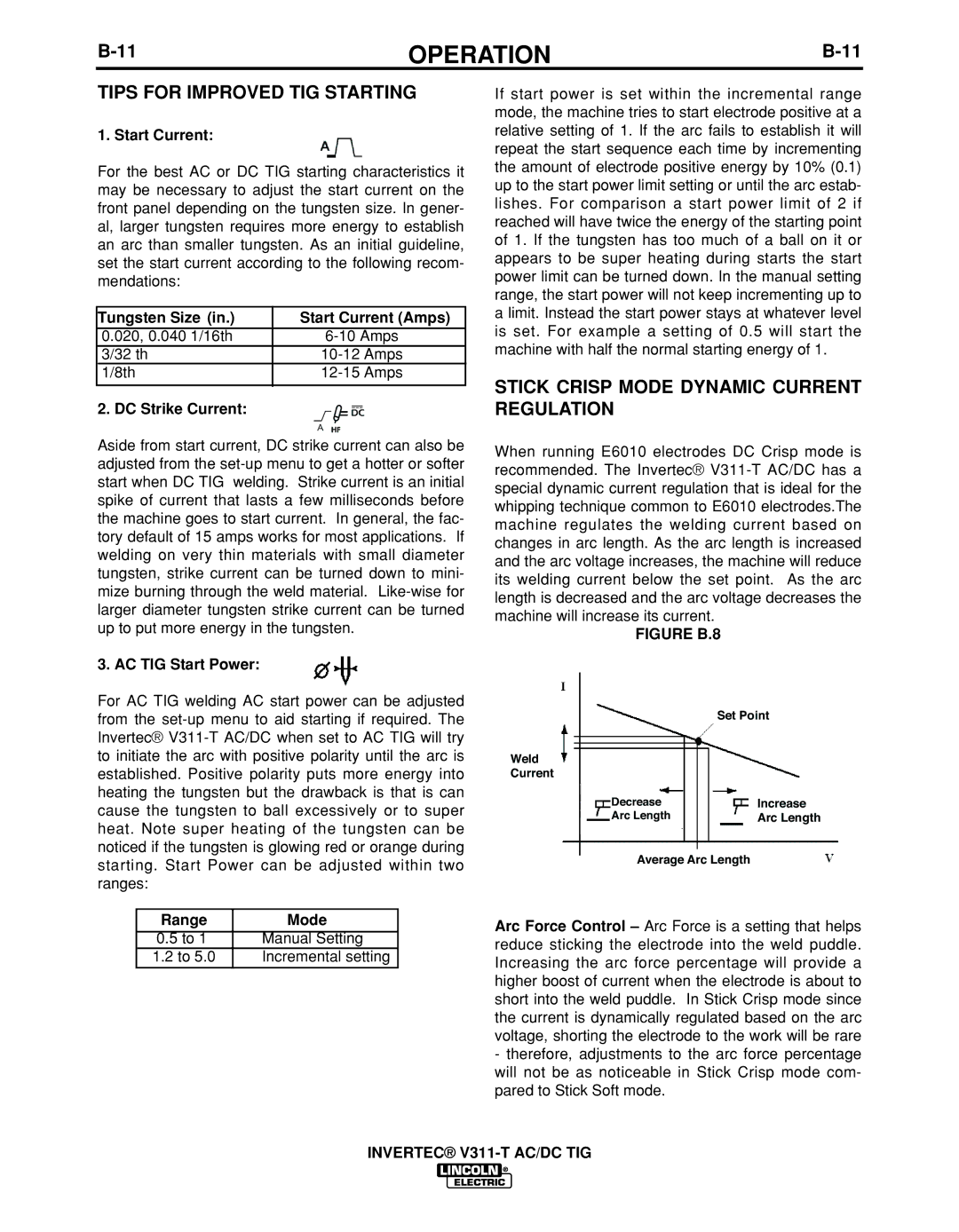
OPERATION | ||
|
|
|
TIPS FOR IMPROVED TIG STARTING
1. Start Current:
For the best AC or DC TIG starting characteristics it may be necessary to adjust the start current on the front panel depending on the tungsten size. In gener- al, larger tungsten requires more energy to establish an arc than smaller tungsten. As an initial guideline, set the start current according to the following recom- mendations:
Tungsten Size (in.) | Start Current (Amps) |
0.020, 0.040 1/16th | |
3/32 th | |
1/8th | |
|
|
2. DC Strike Current: |
|
Aside from start current, DC strike current can also be adjusted from the
3. AC TIG Start Power:
For AC TIG welding AC start power can be adjusted from the
Range | Mode |
0.5to 1 Manual Setting
1.2to 5.0 Incremental setting
If start power is set within the incremental range mode, the machine tries to start electrode positive at a relative setting of 1. If the arc fails to establish it will repeat the start sequence each time by incrementing the amount of electrode positive energy by 10% (0.1) up to the start power limit setting or until the arc estab- lishes. For comparison a start power limit of 2 if reached will have twice the energy of the starting point of 1. If the tungsten has too much of a ball on it or appears to be super heating during starts the start power limit can be turned down. In the manual setting range, the start power will not keep incrementing up to a limit. Instead the start power stays at whatever level is set. For example a setting of 0.5 will start the machine with half the normal starting energy of 1.
STICK CRISP MODE DYNAMIC CURRENT REGULATION
When running E6010 electrodes DC Crisp mode is recommended. The Invertec®
FIGURE B.8
Set Point
Weld
Current
|
|
|
|
| |
Increase | |||||
Decrease |
| ||||
| Arc Length |
| Arc Length |
| |
|
|
|
|
|
Average Arc Length
Arc Force Control – Arc Force is a setting that helps reduce sticking the electrode into the weld puddle. Increasing the arc force percentage will provide a higher boost of current when the electrode is about to short into the weld puddle. In Stick Crisp mode since the current is dynamically regulated based on the arc voltage, shorting the electrode to the work will be rare
-therefore, adjustments to the arc force percentage will not be as noticeable in Stick Crisp mode com- pared to Stick Soft mode.
